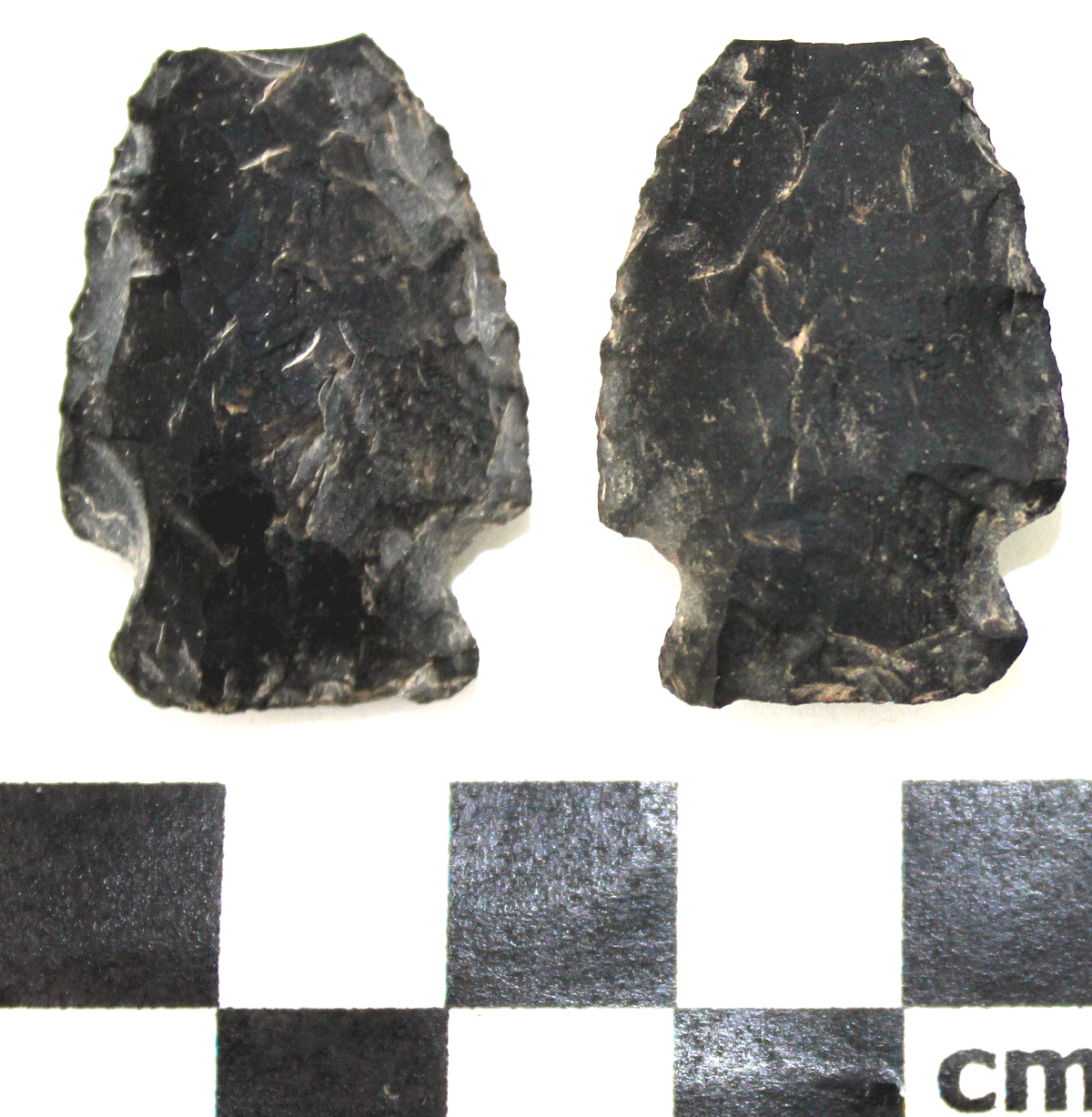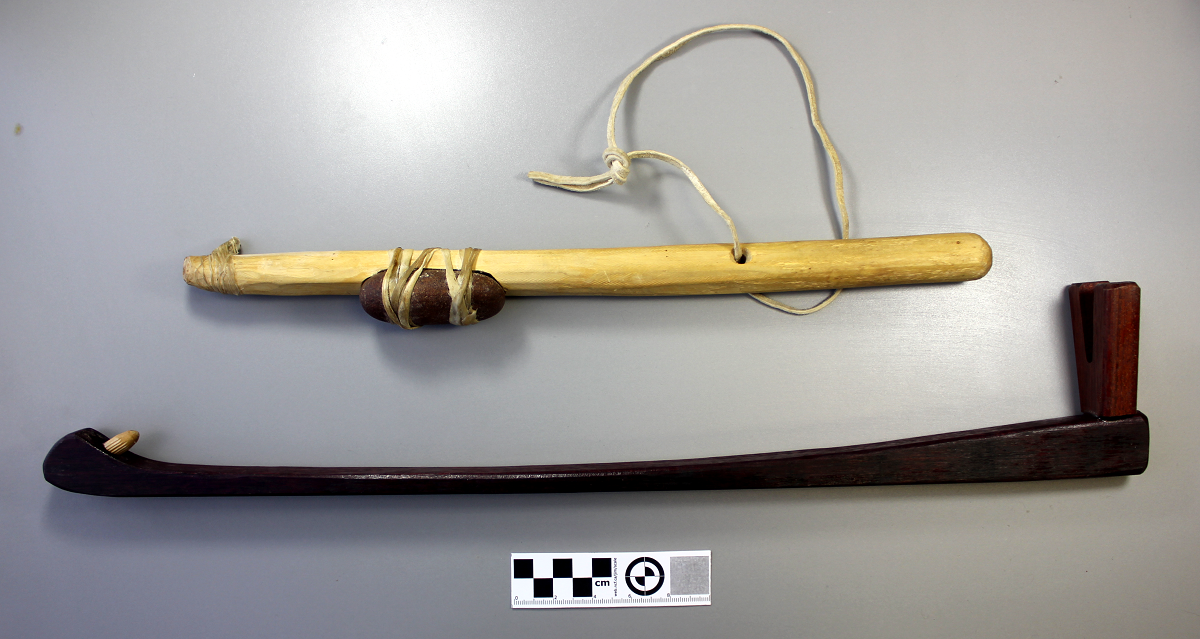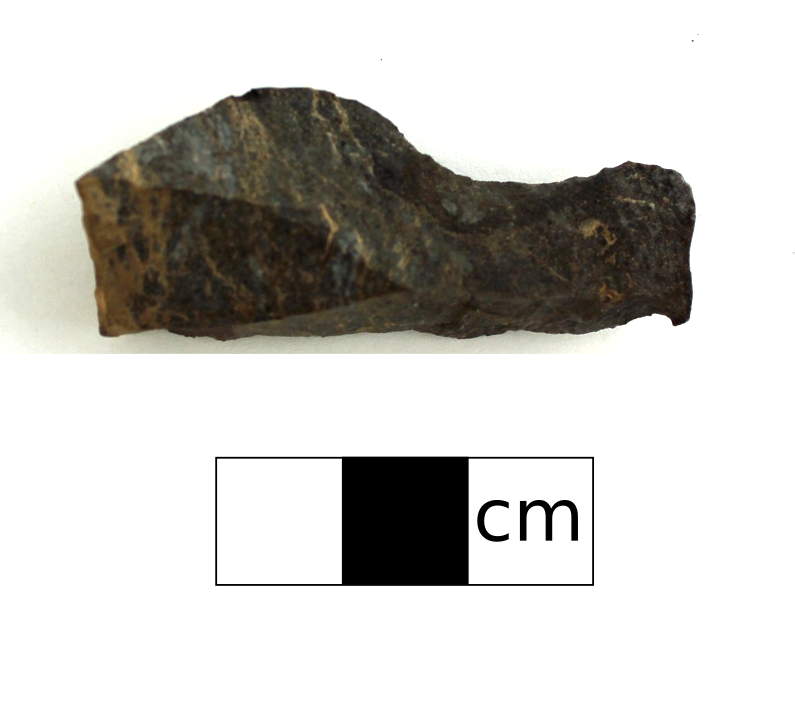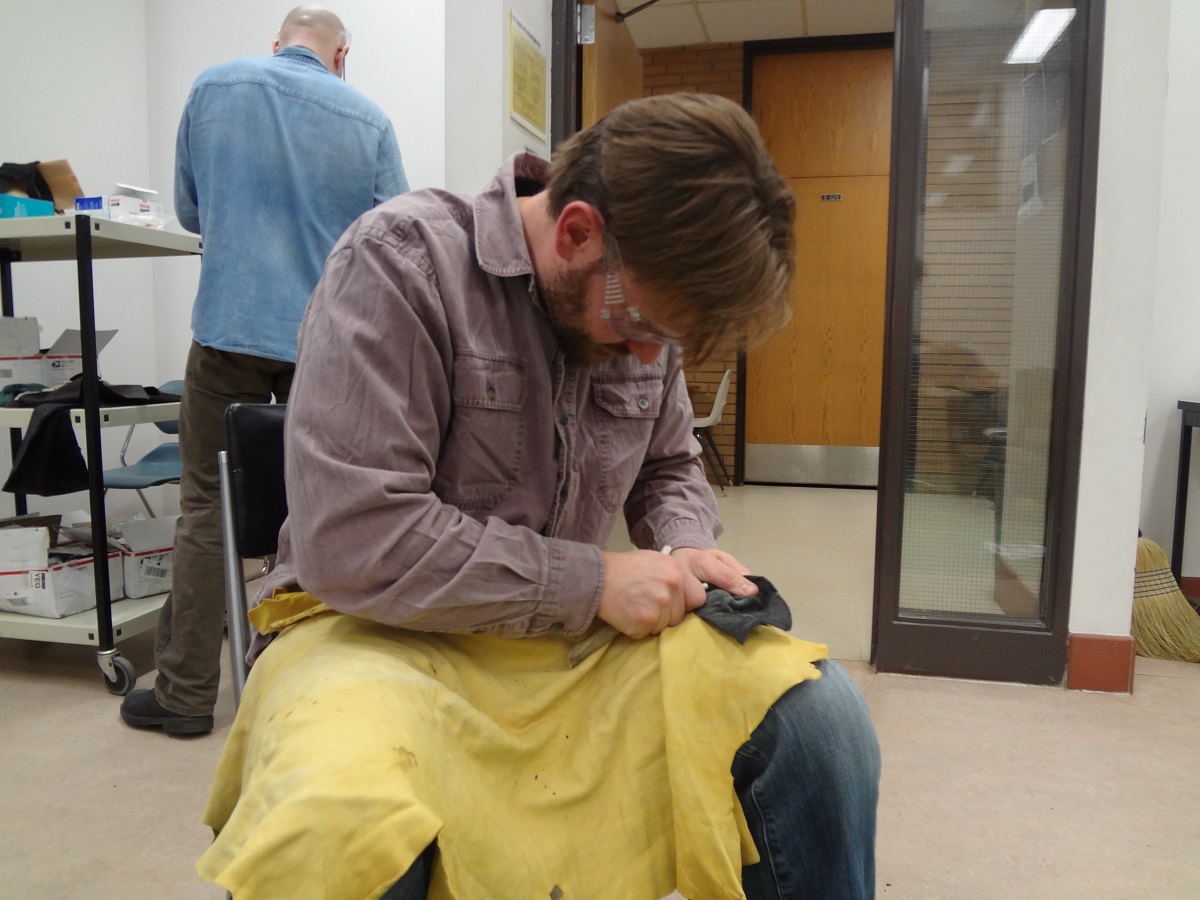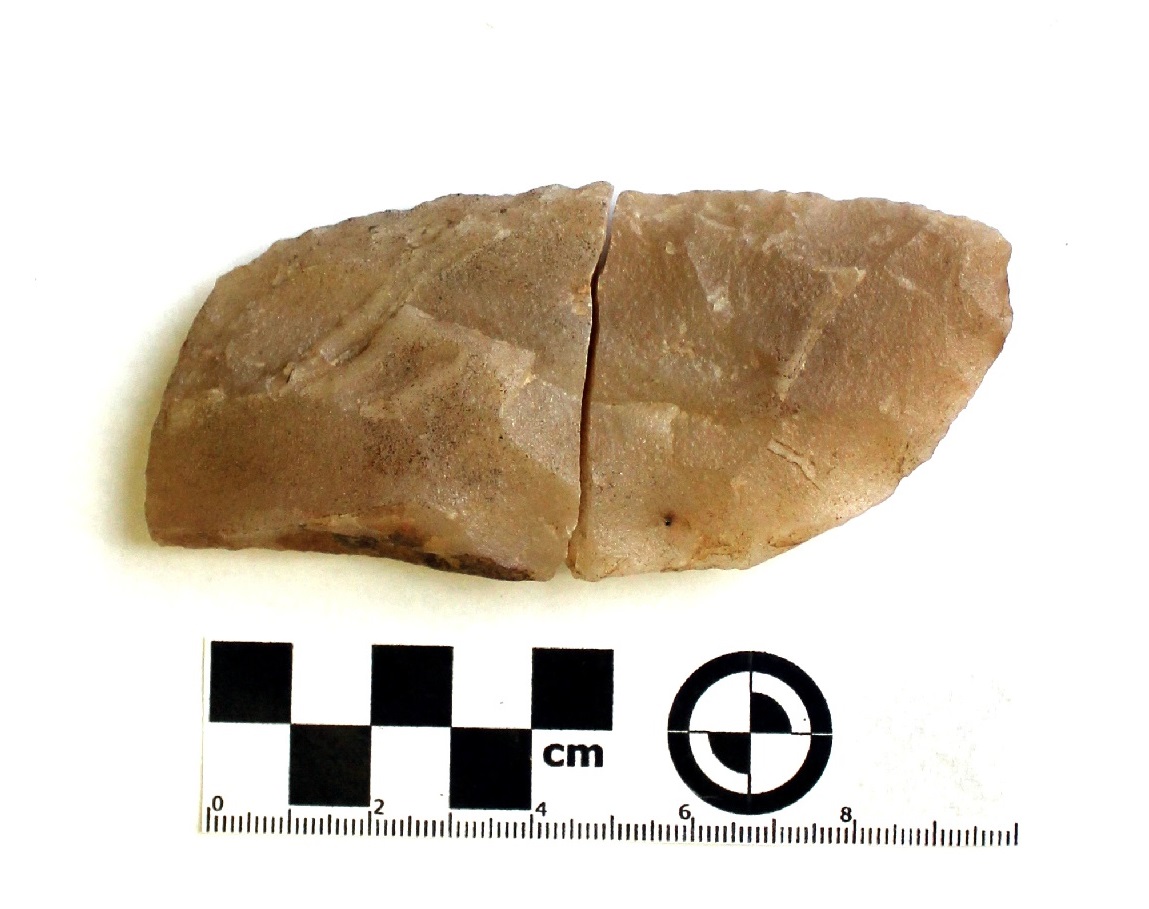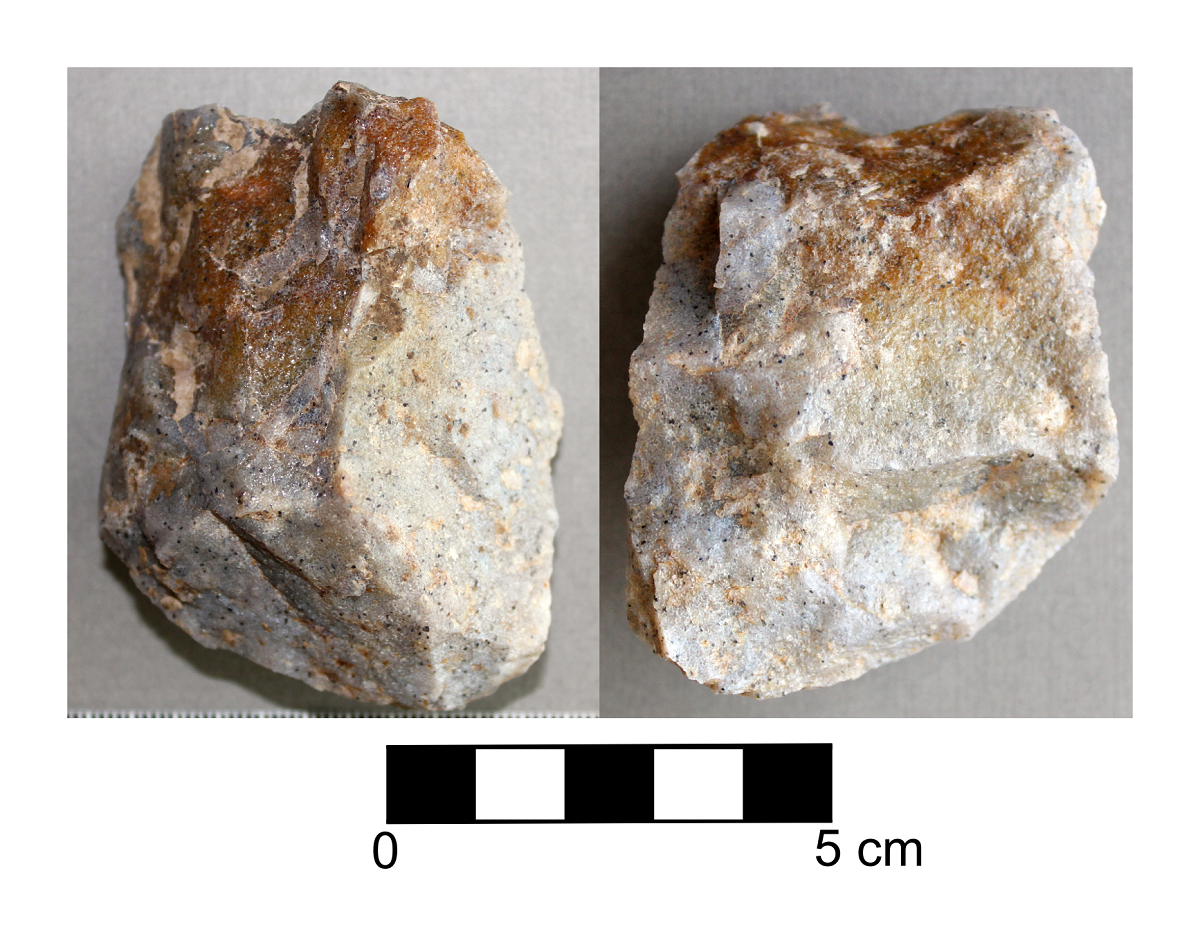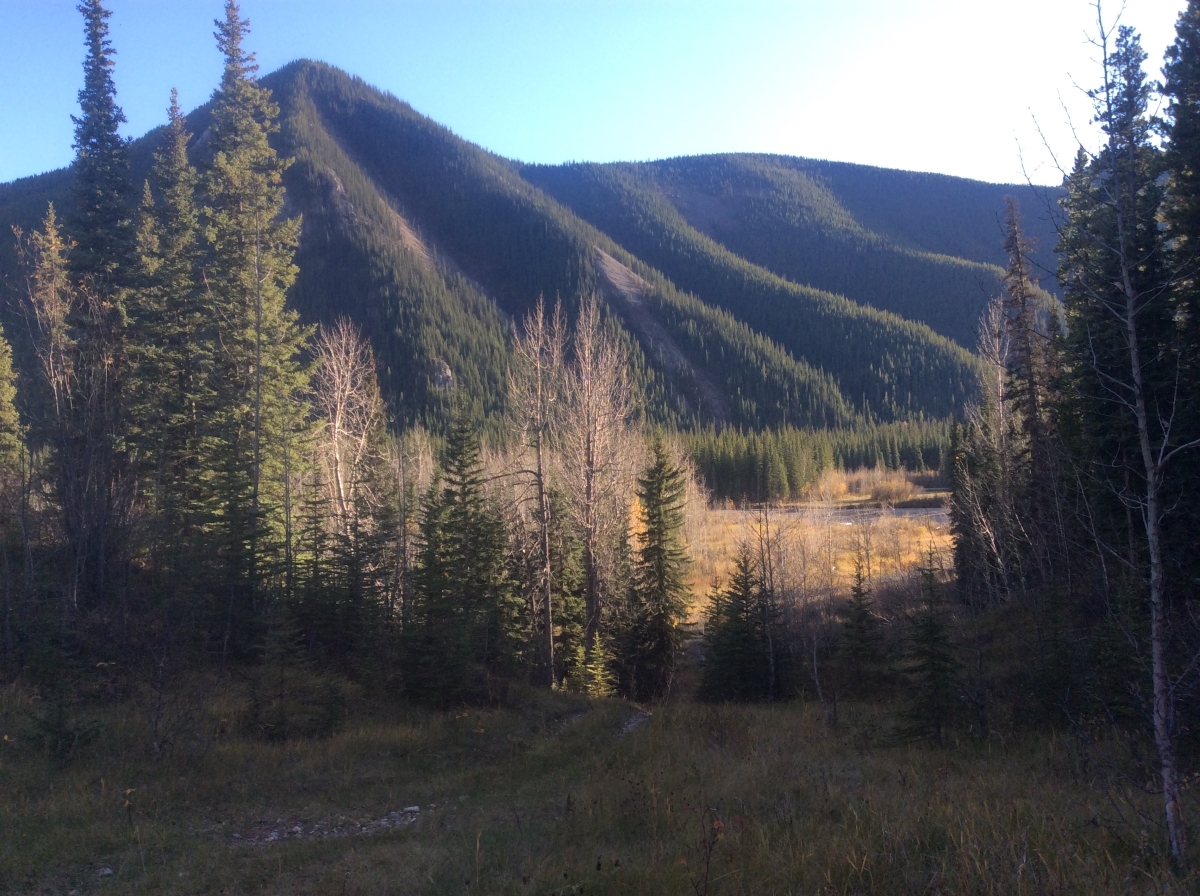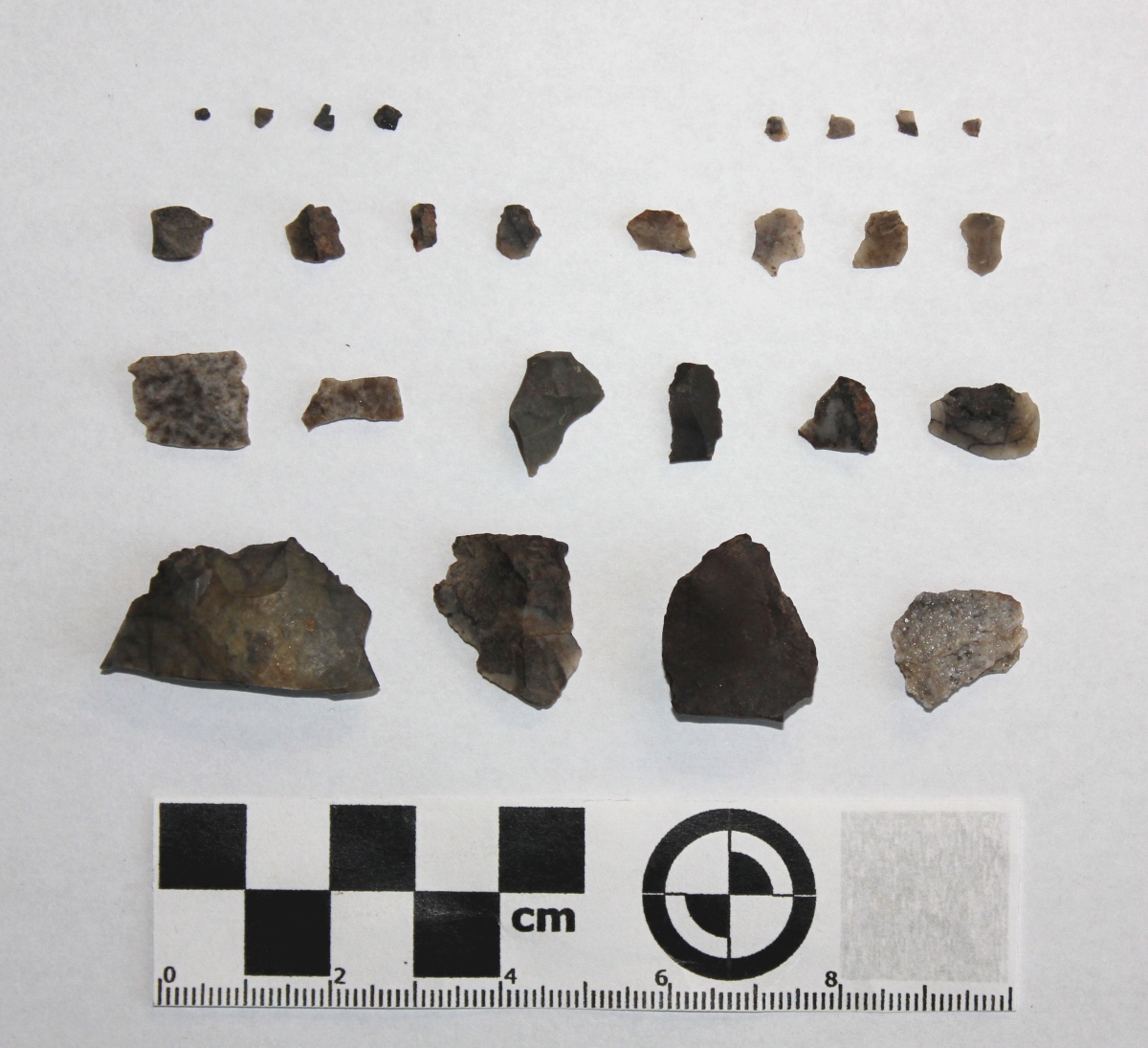Projectile points come in many shapes and sizes ranging from large paleolithic spear points to small protohistoric arrow heads to even smaller “toy arrow heads”. This artifact type is a stone that has been shaped using flint knapping techniques to create a sharp triangular and aerodynamic tip that is attached to a wooden shaft that can be propelled through the air by throwing by hand, atlatl, or bow, to hunt game. This is an important artifact type as over time the styles of points changed allowing us to use the style to estimate the time period a site was occupied. This particular point is a Besant style dart point, which dates to approximately 2,500 -1,350 BP.
Tag: technology
Atlatl
An atlatl is a throwing stick with a small hook used to throw darts (projectiles). It allowed the hunter or warrior to create more leverage to increase the speed and distance of the dart. This weapon was used throughout North America including Alberta, approximately between 7,500 and 1,350 B.P.
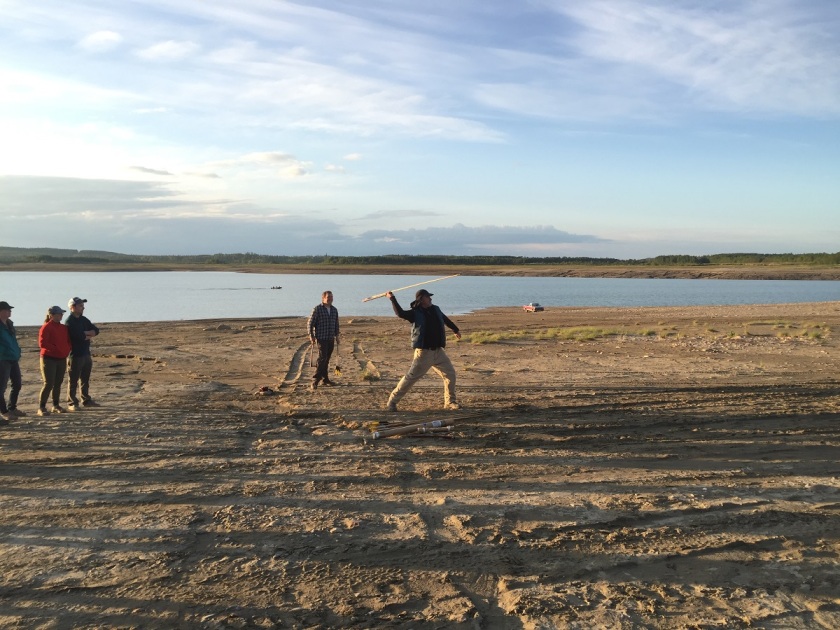
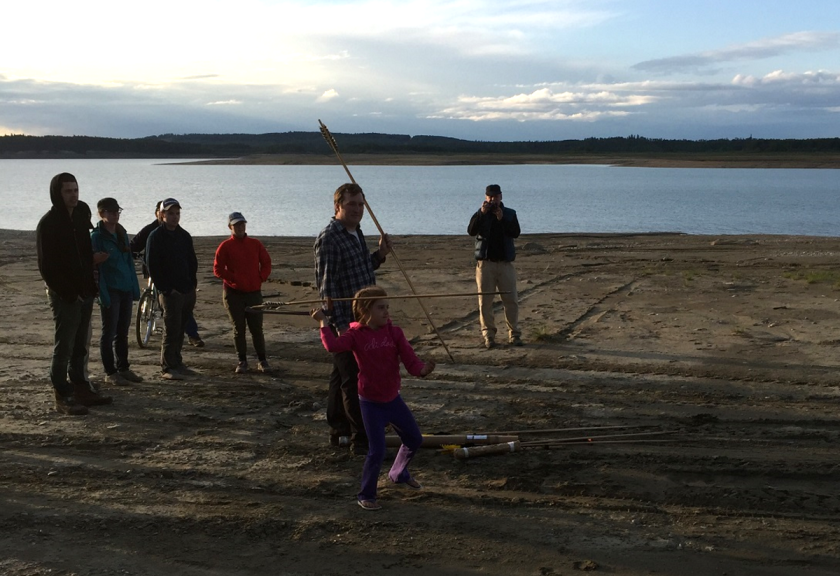
Spokeshave
A spokeshave is a type of formed tool that was used to scrape and/or smooth wooden shafts or handles such as on spears, darts and arrows. It is typically identified by the inward curving edge. This edge typically has small flakes removed from use or from shaping it into the curve prior to use.
Knapping / Flintknapping
The process of creating stone tools through lithic reduction (by removing stone chips). A hammer (such as a stone or antler) is used to strike the core rock in order to remove smaller pieces. The core is either shaped into a specific tool, like a biface, or the flakes that have been taken off are used or shaped into something specific, like a projectile point.
Biface
A biface is a stone tool that has flakes removed from both sides. It can be used as a knife, scraper, or further worked into a more recognizable tool. The typical biface shape is an oval with slightly pointed ends. The biface on the left was found near Fort Vermilion in 2016.
Core
A core is a larger piece of stone from which many smaller flakes are removed. These flakes are then turned into tools or are utilized as they are. There are many different types of cores, but a common way to describe them is by the direction(s) flakes were removed, or by the shape of the core. For example, unidirectional cores have flakes removed all in the same direction. That has had many stone flakes removed to make other tools.
The View From Out Here
We took this photo in the fall of 2016 while completing fieldwork for Sundre Forest Products’. It’s of the Clearwater River valley as seen from a site we found that year. The site was easily identified because artifacts were eroding out of the steep valley wall and the ATV trails that cross the landscape.
From here, one would be able to keep an eye on traffic (human, moose, deer, etc.) through the valley (if the vegetation allowed it, that is). This is probably one of the reasons it was used as a campsite in the past, and still is to this day – we found a couple of modern fire pits at the ancient site.
Views are becoming an increasingly important and interesting part of predicting site locations and are becoming easier to consider. We have GIS to thank for that. Here former Tree Time archaeologist, Tim Allan, has an update on his MA research that provides an example of what a view-shed analysis can look like.
In the case of the Clearwater River site and the Hummingbird Creek site Tim discusses, both appear to be located to command the view – look how similar the landscapes are.
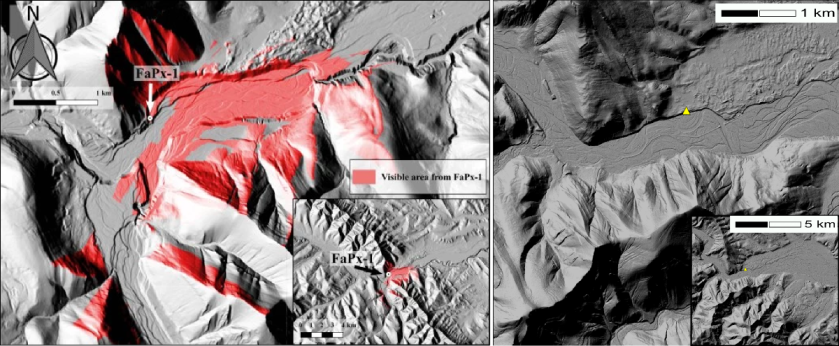
As more view-shed analyses are undertaken in Alberta, we may see patterns emerge that indicate that people were choosing to place their structures or settlements in a location that ensured they could see certain landmarks (like kiva towers), be seen from certain landmarks (like the possible Whitby signal station), or to be protected from views altogether (like low-elevation defensive sites in the islands of Fiji).
These analyses of the views to, from, and between contemporaneous sites can provide us with some clues as to social interactions and climates in the past.
Debitage / Flakes
Debitage, or flakes, are bits of stone chips that are left behind while making or modifying a stone tool. This artifact type has distinctive features that make them easily recognizable to archaeologists and clearly distinguish them from naturally occurring broken rocks.

